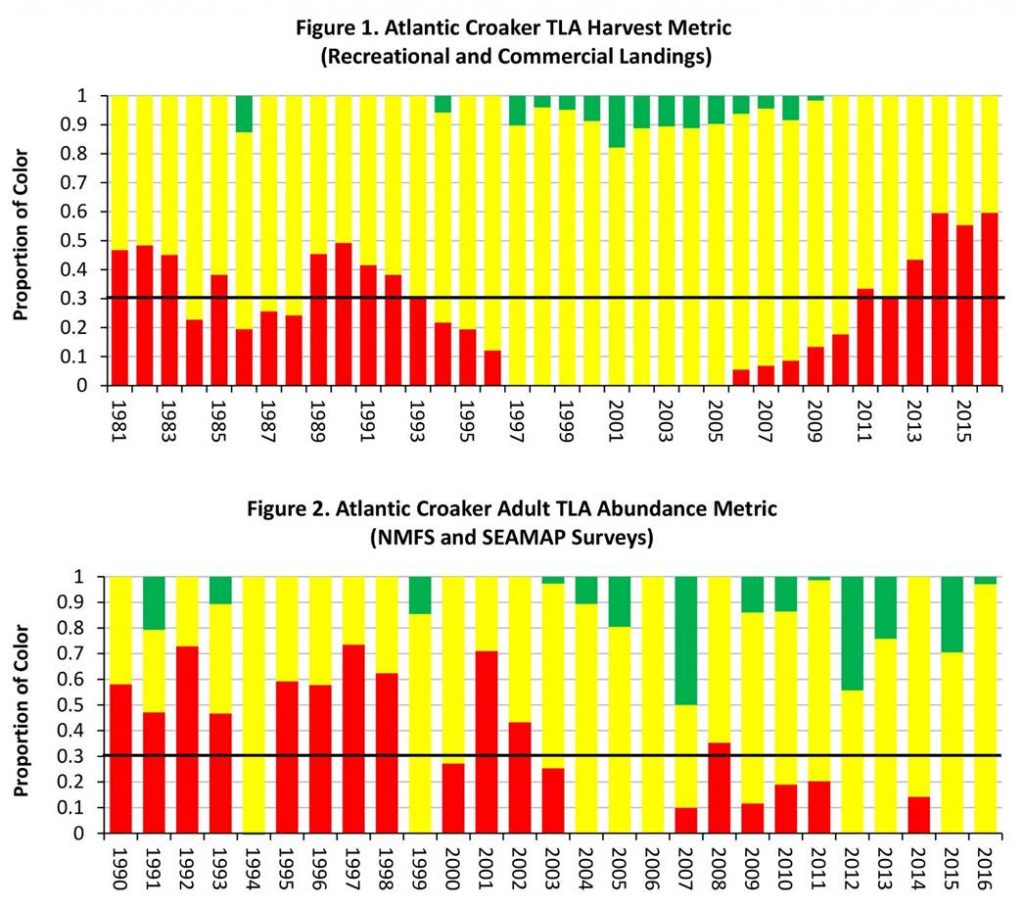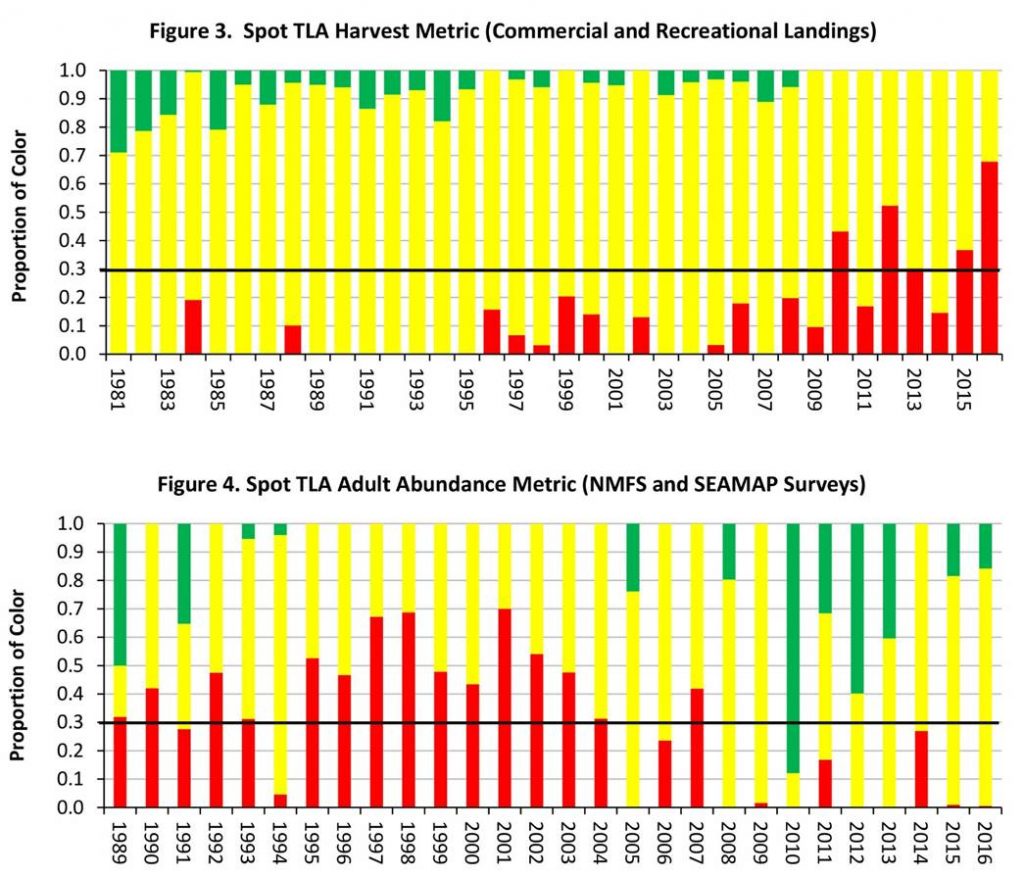August 2, 2017 — ALEXANDRIA, Va. — The following was released by the Atlantic States Marine Fisheries Commission:
The Atlantic States Marine Fisheries Commission’s South Atlantic State/Federal Fisheries Management Board met in May and August to receive the findings of the 2017 Atlantic Croaker and Spot Benchmark Stock Assessment and Peer Review Reports. While neither assessment was endorsed by an independent panel of fisheries scientists (Peer Review Panel) for management use, the Panel agreed with the general results of the assessment that immediate management actions are not necessary. The Panel recommended continued use of the annual traffic light analyses (TLA), established in 2014 to monitor fishery and resource trends, and implement management measures as needed, for Atlantic croaker and spot.
The Panel did acknowledge several improvements since the 2010 Atlantic croaker assessment, notably with regard to the estimation and inclusion of dead discards from the Southeastern US shrimp trawl fishery. Estimates of these discards indicate they account for a large majority of fish removed from the population annually (via directed and non-directed fishing activities) for both Atlantic croaker and spot. The Panel recommended continued monitoring of these discards and potential inclusion or consideration of these discards in the annual TLAs conducted for Atlantic croaker and spot.
A key issue causing uncertainty in the results of both assessments was the disagreement between recent trends in harvest and abundance. Trends in stock abundance for Atlantic croaker and spot are estimated through several federal and state fishery-independent surveys. Typically, if these surveys catch a relatively large number of Atlantic croaker or spot, that would indicate a greater number of Atlantic croaker or spot available to be harvested by their directed fisheries. Thus, scientists and managers would expect a greater abundance of Atlantic croaker or spot would also be reflected through an increase in harvest for that year. Similarly, a decrease in abundance would be expected to be coupled with a decrease in harvest. However, for both Atlantic croaker and spot, recent harvest numbers are declining while estimated abundance is increasing.
A similar trend is evident in the 2016 TLAs for Atlantic croaker and spot. The TLA assigns a color (red, yellow, or green) to categorize relative levels of indicators on the condition of the fish population (abundance metric) or fishery (harvest metric). For example, as harvest increases relative to its long-term mean, the proportion of green in a given year will increase and as harvest decreases, the amount of red in that year will increase. Under the Addendum II to Amendment 1 for Atlantic Croaker and Addendum I to the Omnibus Amendment for Spot, state-specific management action would be initiated when the proportion of red exceeds the specified thresholds (for both harvest and abundance) over three consecutive years for Atlantic croaker and two consecutive years for spot.
The 2016 TLA for Atlantic croaker shows red proportions of greater than the 30% threshold for the harvest metric (Figure 1) and 0% for the abundance metric (Figure 2), indicative of relatively low harvest and high abundance in 2016. Since thresholds were not exceeded for both metrics over the last three years, no management response is necessary for Atlantic croaker.
The 2016 TLA for spot also shows red proportions of greater than the 30% threshold for the harvest metric (Figure 3) and 0% for the abundance metric (Figure 4), indicative of relatively low harvest and high abundance in 2016. Since thresholds were not exceeded for both metrics over the last two years, no management response is necessary for spot.
The Peer Review Reports will be available on the Commission’s website, www.asmfc.org, on the respective species pages by mid-August. For more information, please contact Mike Schmidtke, Fishery Management Plan Coordinator, at mschmidtke@asmfc.org or 703.842.0740.


